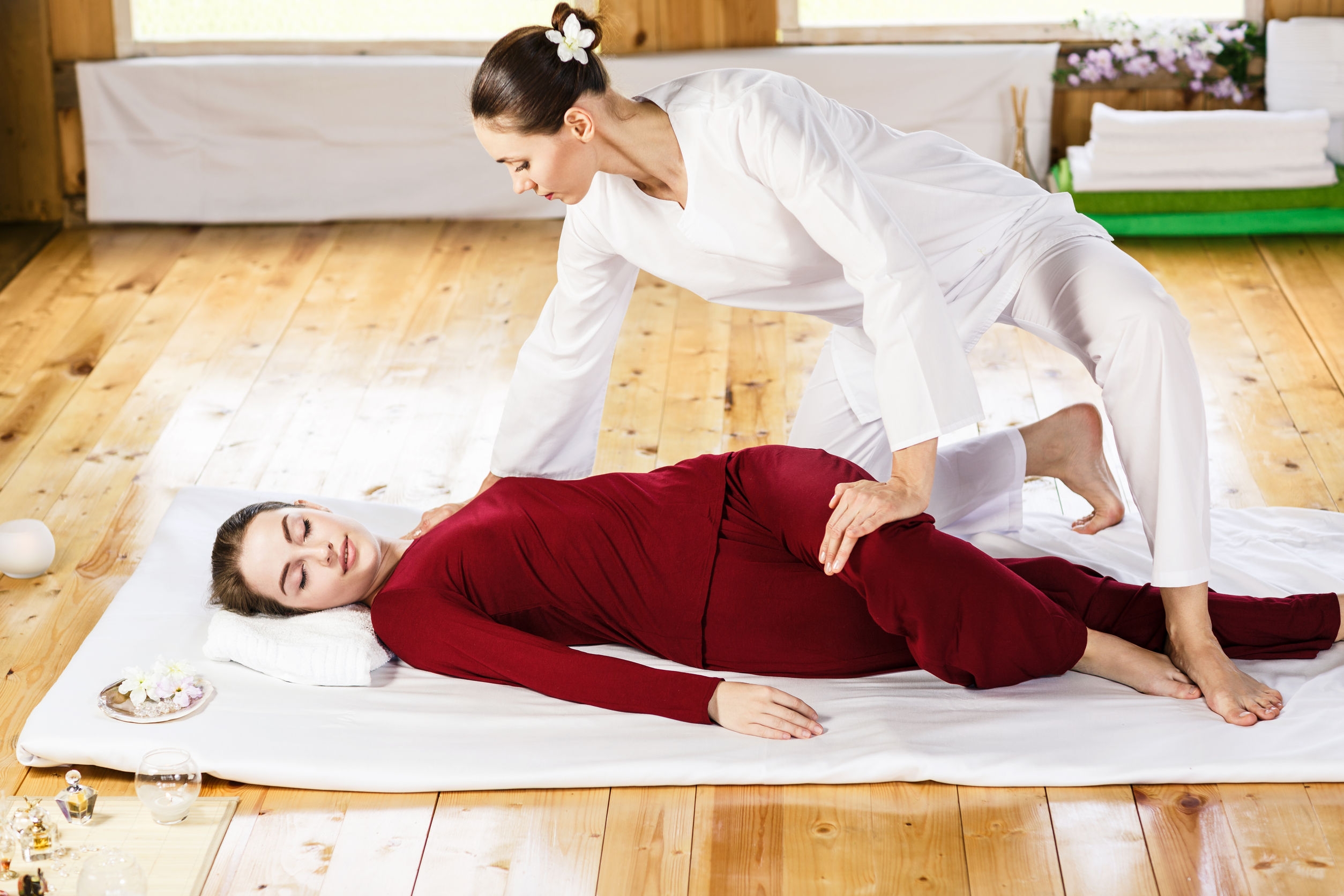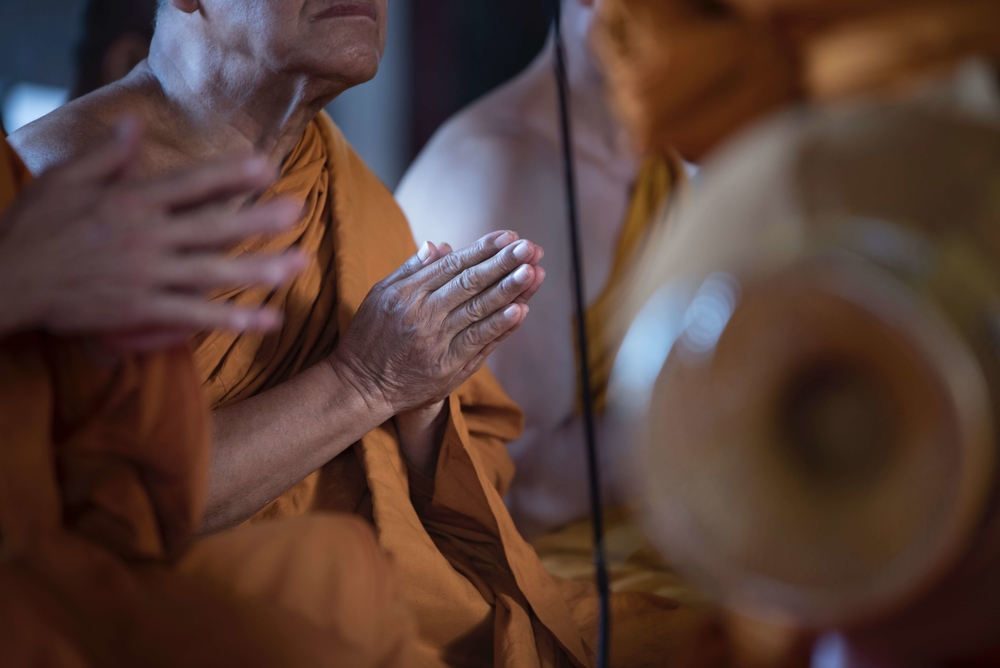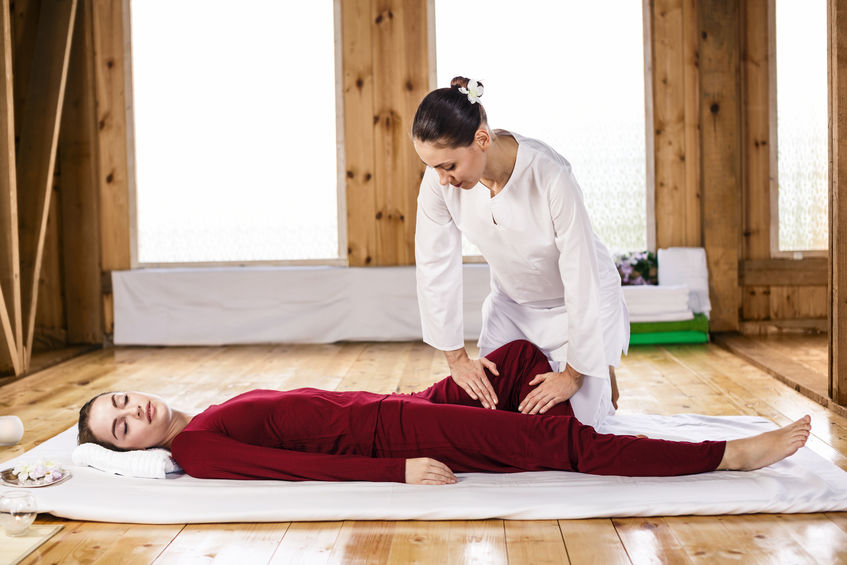Thai massage – also known as Thai Yoga Massage, or informally as ‘the lazy person’s yoga’ – combines assisted yoga with acupressure techniques.
Thai Massage Quick Facts
- Duration: In Thailand a treatment can often last up to 2 hours however in Western countries typically a Thai Massage will last between 30 and 90 minutes.
- Body Parts treated: Back, gluteal muscles, legs (front and back), arms, head, and shoulders.
- Techniques Used: The therapist will apply the massage with the hands and feet. No oils or creams are used, pressure is applied all along the energy lines in the body. Passive stretching will be incorporated.
- Equipment: A futon mattress, or other foam-style padding that is low to the ground.
Looking for something in particular? Jump to the section you want here:
- What is Thai massage?
- A brief history of Thai massage
- What are the benefits of Thai massage?
- How does Thai massage work?
- Mobile Thai massage
- What to expect from a Thai yoga massage
What is Thai massage?
Thai massage – also known as Thai Yoga Massage, or informally as ‘the lazy person’s yoga’ – combines assisted yoga with acupressure techniques. The therapist will incorporate yogic stretching movements as they knead and press muscles along the body’s energy lines with the hands and feet. Thai massage combines the principles of acupressure whereby the Sen is stimulated, which is said to balance the energy system in the body.
The passive stretching can also help to open up the body which can help increase flexibility and relieve tension within the joints and the muscles. A Thai massage treatment typically begins at the feet with the client lying face down and is more energetic and rigorous than your usual massage. The therapist will also often use their hands and feet to apply pressure, and the treatment usually is done through the clothes, although oils and lotions can sometimes be used if requested.![]()
![Thai monks praying Thai monks praying]() A brief history of Thai massage
A brief history of Thai massage
Thai massage is said to have been founded over 2500 years ago by doctor and physician Jivaka Komarabhacca, who was personal physician to the king of India at the time, Magadha King Bimbisara. Dr Jivaka, noted by many names in the ancient Buddist scripts - Shivago Komarpaj, Dr. Jivago, Jivacca Komarapaj to name a few – was known for his extraordinary skills in traditional Indian medicine (eg. Ayurveda), but was also skilled in the art of meditation and Asana. He is often referred to as the “Father Doctor” or “Father of Medicine” and it is custom to pray to him for guidance and inspiration before starting a massage or at the end of the treatment. This prayer is called Wai Khru, still frequently carried out in Thailand today.
Dr. Jivaka was also a friend and personal physician to Buddha, and provided free medical care to him and other monks in the monasteries. Thai yoga massage was an integral part of the Buddist religion and the massage technique eventually spread to the Thai people, and after the Thai Massage Revival Project in 1985, it made its way to America and to the rest of the world. ![]()
What are the benefits of Thai massage?
There are many benefits of having a Thai massage treatment, since through various techniques and applied pressures, muscles are manipulated releasing tension and endorphins to help us feel good. The theory for these benefits also lies in the influence of Chinese medicine and acupressure philosophy, which believe we all have meridian lines within our bodies and along these meridian lines are acupressure points. By stimulating the acupressure points this will allow for a healthier flow of energy. The energy is known as Qi or Chi.
The main benefits of Thai massage are:
- Improved flexibility and range of muscle movement through assisted stretching
- Blood flow is increased, and circulation assisted
- Release of physical tension to relieve aches and pains
- Release of emotional tension held within the body, combating stress and providing a feeling of relaxation
In addition to these benefits, like all massage, the stimulation of the nerves and skin cells can improve skin quality and muscular function, and contribute to an overall sense of well-being.![]()
How does Thai massage work?
Chinese medicine and acupressure philosophy believe we all have meridian lines within our bodies and along these meridian lines (also known as Sen lines) are acupressure points. The belief is that by stimulating the acupressure points this will allow for a healthier flow of energy within the body. The energy is known as Qi or Chi.![]()
Mobile Thai massage
As the treatment is given through the clothes and equipment is minimal and can be a good choice should you wish to employ a qualified mobile Thai massage therapist. It’s not typically undertaken at wellness events or in corporate setting as the treatment lengths are prohibitive for the number of people who can be treated.![]()
![Woman having a Thai massage Woman having a Thai massage]() What to expect from a Thai yoga massage
What to expect from a Thai yoga massage
As with all types of massage treatments the therapist will play a great bearing on the treatment style. It has been stated that there are two different styles of Thai massage, Southern and Northern. The Southern is said to be more invigorating and is taught in the Wat Pho temple in Bangkok and the Northern, taught in Chiang Mai, has a slower more rhythmic style of approach. Many Western spa’s have adopted the Northern approach. In your consultation you should make your therapist aware of any areas with poor range of motion, injury or sensitivity. The treatment is typically provided on a futon mattress, or other foam-style padding placed on the floor.
Whilst Sense Massage Therapy doesn't provide Thai massage, we do offer a range of other great mobile massage services, perfect for events and corporate environments. These include:
- on-site chair massage
- reflexology
- Indian head massage
- desk massage
To find out more about a wide range other massage treatments, click here to return to our Learning Hub.


 What to expect from a Thai yoga massage
What to expect from a Thai yoga massage